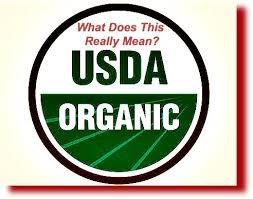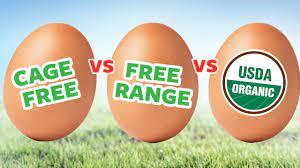 A recent survey of 300 consumers confirmed their purchase of USDA certified organic foods as part of regular shopping. The survey disclosed that only 20 percent of those responding could actually define ‘organic’. With sales of organic products in the region of $60 billion annually, the survey results suggest that the USDA and the Organic Trade Association should reconsider their respective roles in advancing consumption of organic foods.
A recent survey of 300 consumers confirmed their purchase of USDA certified organic foods as part of regular shopping. The survey disclosed that only 20 percent of those responding could actually define ‘organic’. With sales of organic products in the region of $60 billion annually, the survey results suggest that the USDA and the Organic Trade Association should reconsider their respective roles in advancing consumption of organic foods.
The USDA defines “organic” as indicating that food has been produced applying approved methods. The term organic does not necessarily represent freedom from infection and only implies that products are free of genetically modified components and were produced without specified fertilizers, additives and pesticides.
Pew Research has determined that three-quarters of adults purchased organic foods on the basis of health concerns. The third motivation was concern over the environment and sustainability with the remainder claiming the inexplicable attribute of “convenience”.
As presently structured USDA organic certification relies entirely on a paper trail audited by designated third party agencies. Consistently, analytical studies show the presence of pesticide residues in produce certified as organic. There is no structured program of selecting and assaying products. A high proportion of organic certified foods and vegetables and all spices and many fruits and vegetables emanate from nations where USDA is reliant on local auditors. The difference in price between conventional and organic products is an incentive for fraud that is impossible to control even with an effective blockchain system. Periodically the USDA-AMS publishes reports on actions taken against fraudulent certification. As with drug trafficking and tax evasion, only small proportion of falsely labeled products are identified and apprehended.
 If the USDA seal is to be regarded as a reliable gold standard, the USDA-AMS must establish a capability for laboratory testing for the presence of GM ingredients, pathogens, pesticides, and disqualified additives. The core of the organic certification program comprises the exclusion of GM products. This has resulted in the emergence of the competing Non-GMO Verified seal that operates in parallel with the USDA but effectively imposes an additional cost on producers that is passed onto consumers.
If the USDA seal is to be regarded as a reliable gold standard, the USDA-AMS must establish a capability for laboratory testing for the presence of GM ingredients, pathogens, pesticides, and disqualified additives. The core of the organic certification program comprises the exclusion of GM products. This has resulted in the emergence of the competing Non-GMO Verified seal that operates in parallel with the USDA but effectively imposes an additional cost on producers that is passed onto consumers.
Organic food products are undergoing scrutiny based on the fact that organic agriculture is clearly less sustainable than conventional cultivation and livestock production. FAO studies have shown that it will be impossible to feed a burgeoning population without the use of GM cultivars and the precision application of fertilizers and pesticides coupled with regenerative cultivation practices. Notwithstanding this reality, the EU common agriculture policy is advocating organic production that will ultimately require importation of food from nations where control over production will be questionable.
Reevaluation of the objectives of the USDA Certified Organic program should be undertaken. How products are certified and the procedures used to ensure conformity with reasonable and justifiable regulations should the subject of evaluation for relevance and practicality.
Effectively the USDA has done very little to promote organic certification. The Board that administers the program comprises individuals with vested interest in maintaining a high price differential and low volume essentially to the detriment of the ultimate expansion of food production applying justifiable principles of organic production. This is exemplified in the demand for outside access of hens producing under the organic program. The measure is less directed towards “organic purity” than it is to disqualify complexes using aviary housing that represent the bulk of organic eggs produced.
By maintaining exclusivity, prices for organic products are maintained at an artificially high level depriving some consumers of their capacity to include organic items in their baskets.
Organic means different things to regulators, producers and consumers. The fact that twenty percent of those purchasing organic products cannot define the concept and a far higher percentage do not understand the deficiencies is serious defect. The USDA-AMS is providing an anticipation that products conform to non-GM, and freedom from pesticides but do nothing to inspect and regulate at an appropriate level. The USDA measures and establishes the quality of many products including milk, the weight of eggs and their grade and the FSIS monitors pathogen content of red meat and poultry and the FDA is concerned with drug residues in animal products. The USDA-AMS should recognize its obligation to consumers and to honest conforming producers and develop a capability to ensure that products are compliant beyond a simple paper trail.